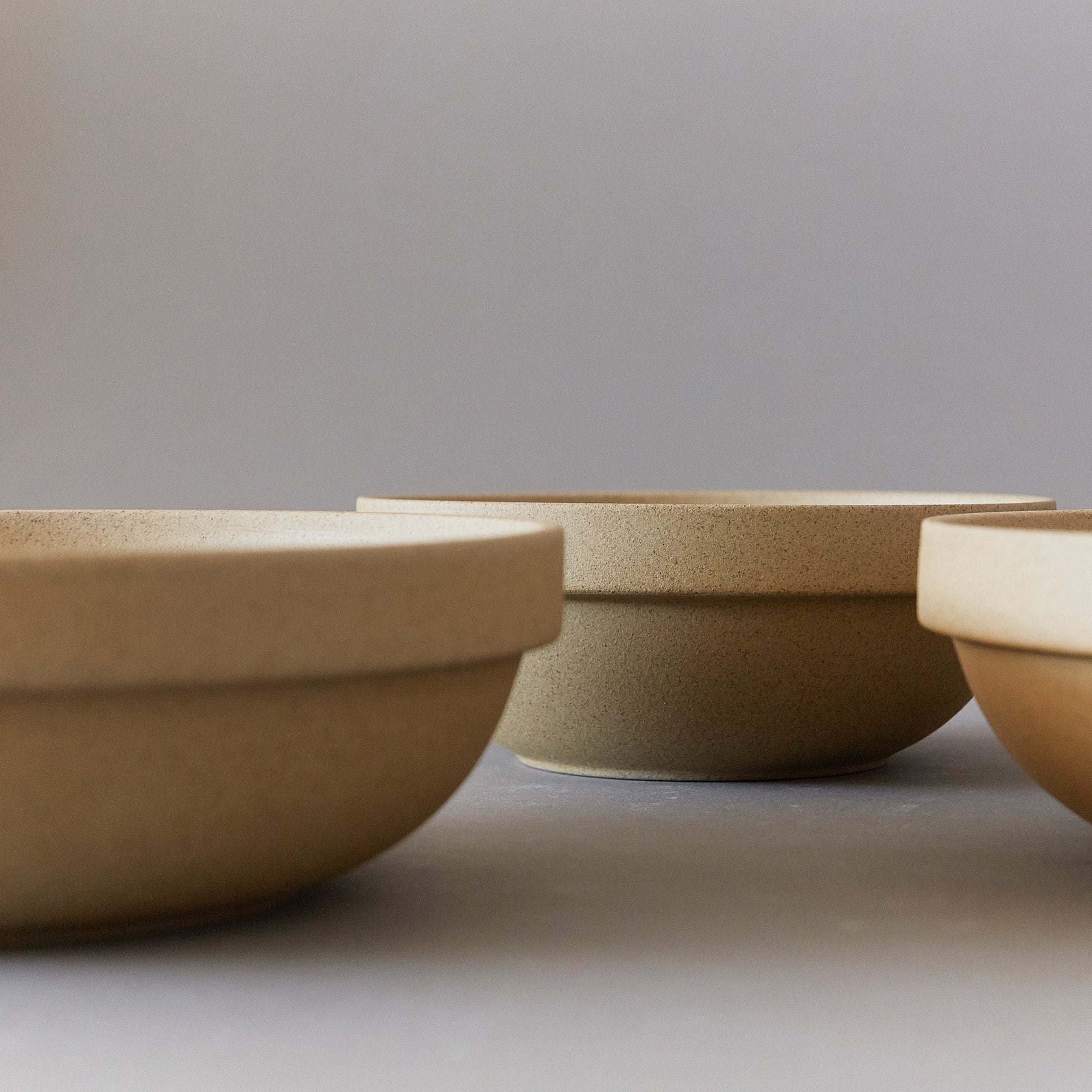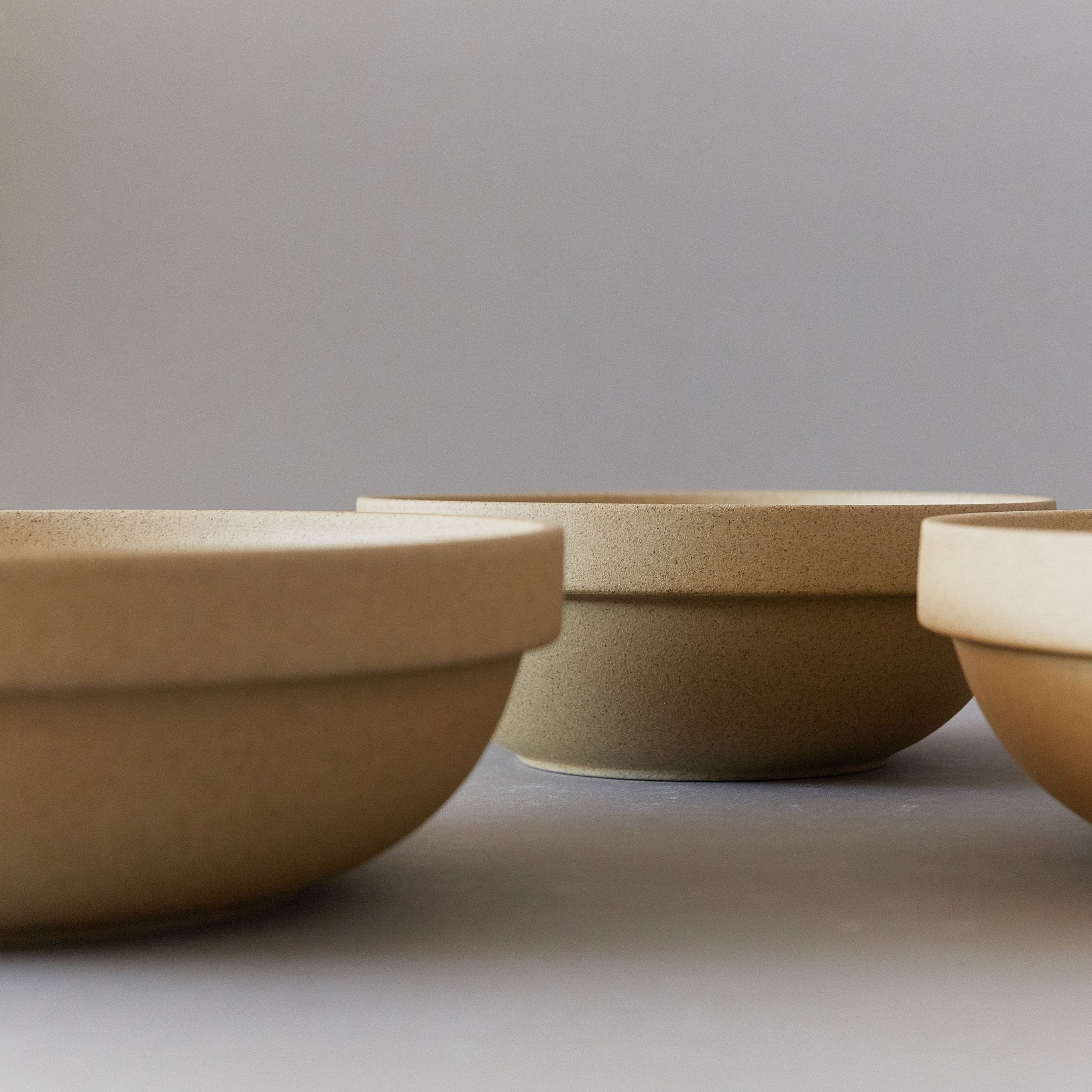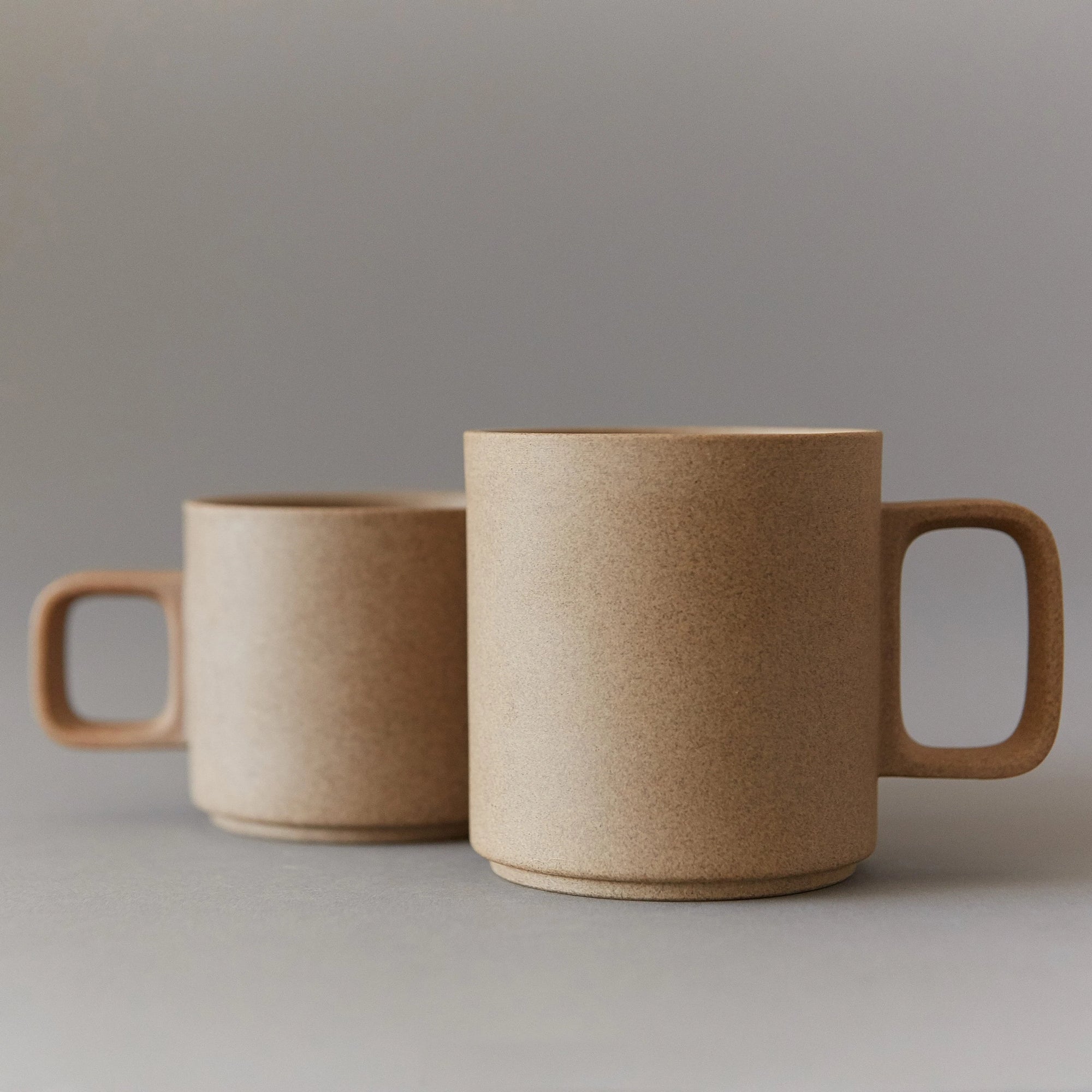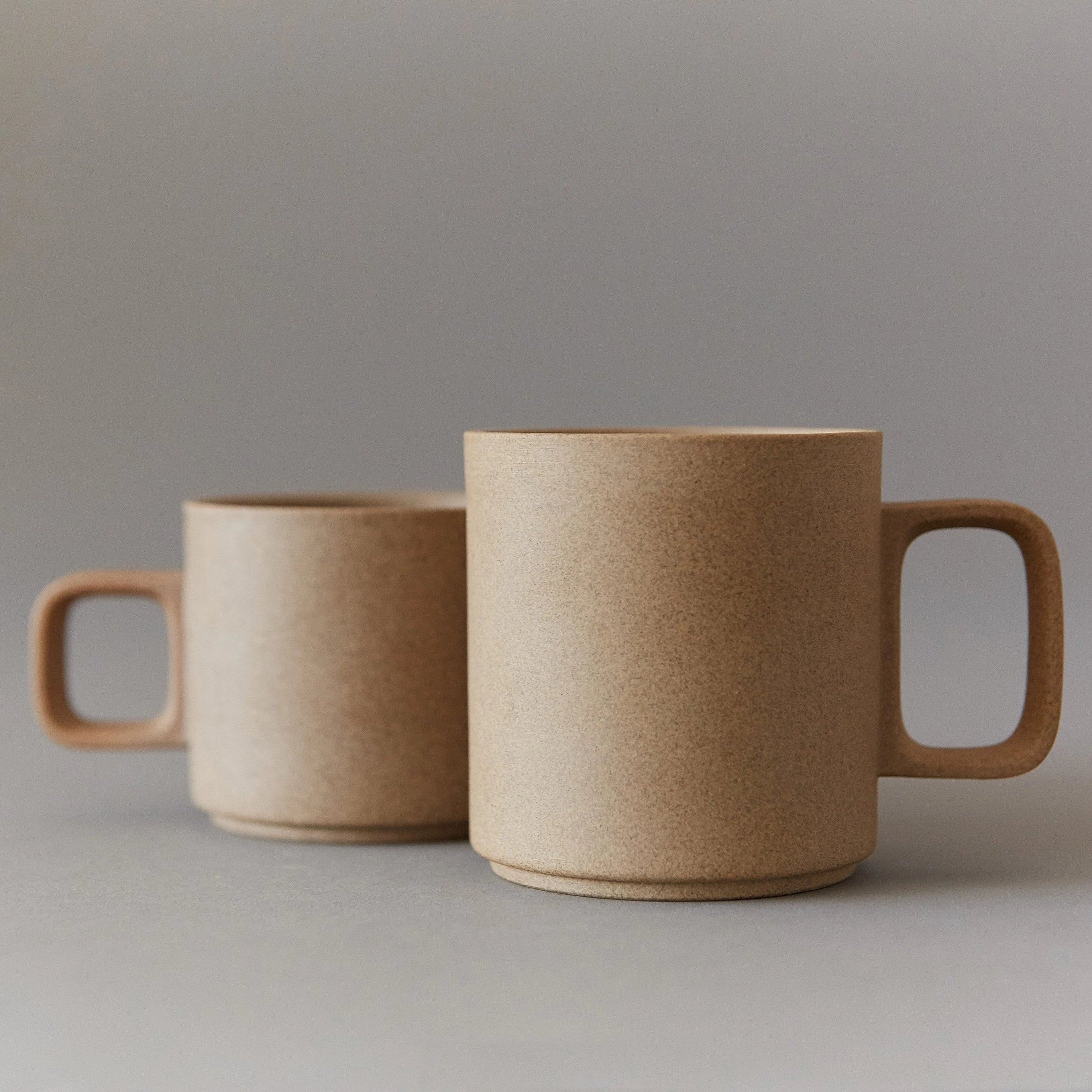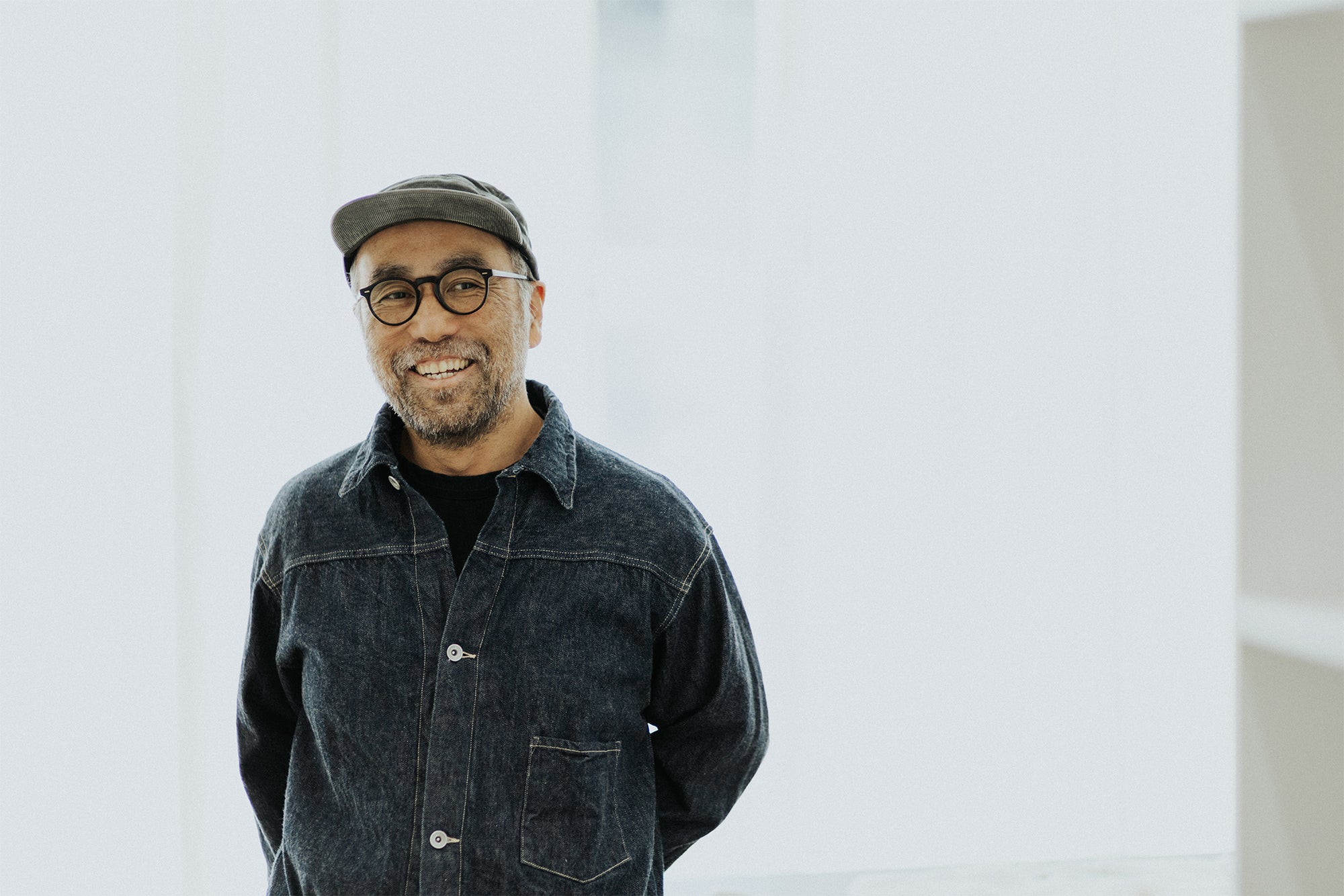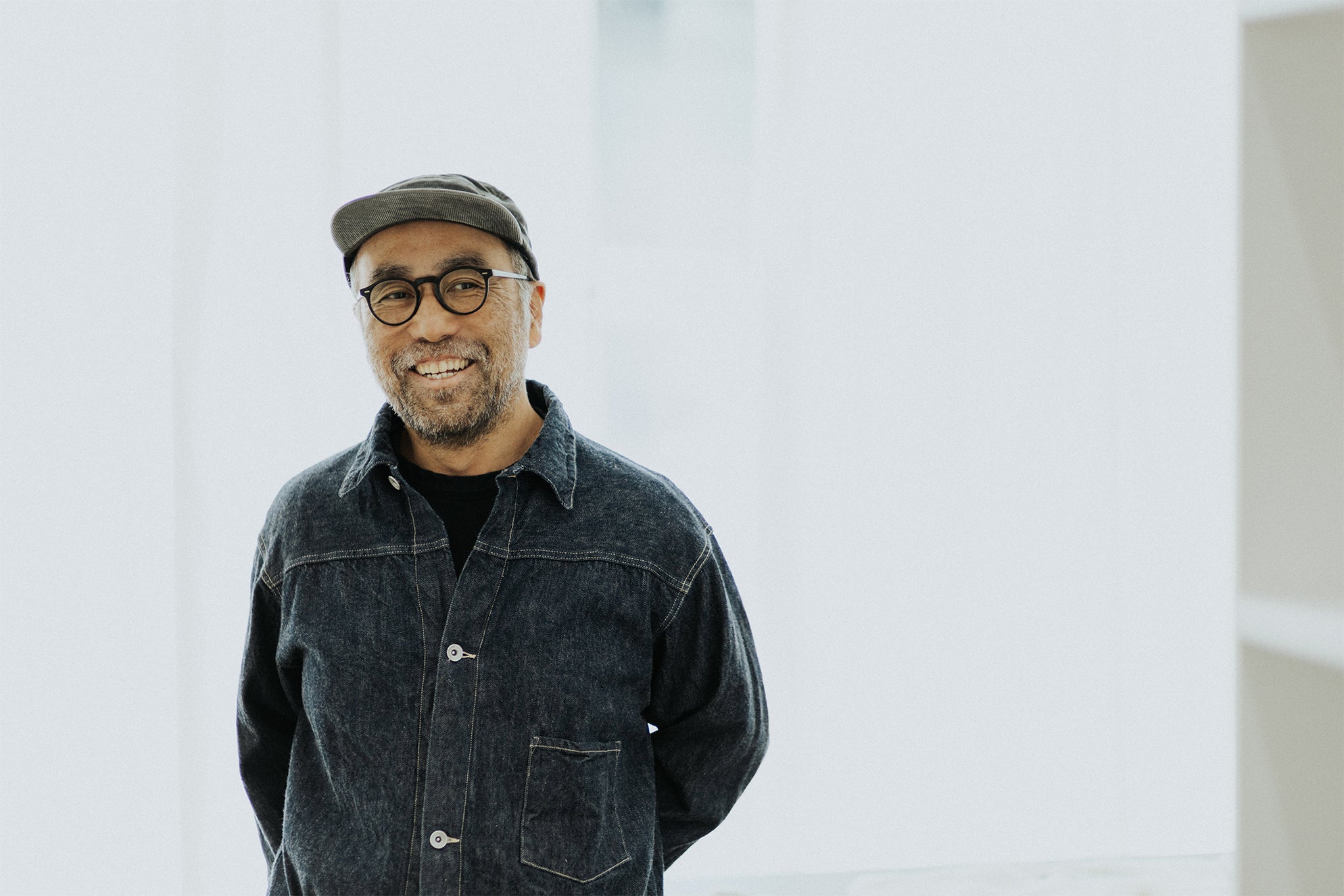
Concept
Interview with Takuhiro Shinomoto of Tortoise
by Emma Tsuchida, TGS staff
ET: Can you tell us what led you to design the HASAMI PORCELAIN collection?
TAKU: Before HASAMI PORCELAIN, I was a furniture designer and shop owner living in Venice Beach with my wife, Keiko and dog, Fido. We started the Tortoise General Store together in 2003 after moving to California from Tokyo. I was never formally educated in design, but I designed furniture for a Japanese company called Idee for many years, and my work at Tortoise here in the U.S. was teaching me daily about life in America. I suppose this positioned me perfectly to gain the confidence of a Japanese distributor exporting Hasami ceramics overseas, and they asked me to help them launch an original tableware series specifically for an American audience.
I had never designed tableware before, but I instinctively understood that Japanese ceramicware catered to Japanese cuisine and eating habits, which were totally different to what I was observing in the U.S. I wanted to design a line that suited all cuisine types and eating styles, a design that was neutral and universal. Japanese tableware is typically small, thin and lightweight as they’re held in the hand and brought to the mouth when eating. Americans eat with a fork and knife, so plates and bowls need to be heavier, larger to avoid sliding on the table. My personal and professional life seemed to have placed me both metaphorically and literally between Japan and the U.S., so my understanding of both sides helped me design a collection that appealed to everyone.
ET: From the beginning, you set out to design tableware that was a big picture collection, where all the pieces worked together cooperatively. What was your inspiration for HASAMI PORCELAIN’s overall design?
I believe you won’t find a line of tableware with as many sizes and dimensions as HASAMI PORCELAIN. When I set out to design HASAMI PORCELAIN, I wanted its modular, multi-functional character to be a central tenant, so people would be encouraged to build a personalized collection of tableware that worked for their specific needs. Even when making furniture, I am drawn to modular, multi-functional design for this reason. For form, I’m attracted to simple and minimal shapes–even though simple design is oftentimes the hardest to achieve. In Japanese, we say ‘nigerbashoganai’, as in there’s no place to hide from our mistakes when a design is reduced to its simplest form. It also goes without saying that some inspiration for Hasami came from my own heritage. The Japanese ‘jubako’, which are stacking boxes used by food delivery services, and ‘oryoki’, the Japanese lacquer eating bowls used by monks, were an inspiration designing HASAMI PORCELAIN. Being Japanese is part of my DNA as a designer so even when it’s not intentional to infuse Japanese sensibilities into my design, those influences are always naturally there to guide me.
ET: The HASAMI PORCELAIN collection straddles a lot of dualities. On the one hand it contains an impressive range of pieces, but remains minimal by being modular. In appearance, it feels organic with its rougher texture and natural finish, but precision in design allows you to literally stack them into neat columns. With all these unique features to the line, were there any challenges when making the line initially?
TAKU: The part of design I enjoy most is finding a place where design can be in harmony with the limitations of production. I don’t want to manipulate or complicate the production process to achieve a specific design. Instead, I try to understand the production process, both its limitations and advantages, to create a product that compliments its parameters. When I first visited the kilns and factories in Hasami, I found in their archive a tiny teacup in a beige, neutral tone that was very textured.
I was told the teacup was a combination of white porcelain and sandstone. Finding this teacup changed the trajectory of HASAMI PORCELAIN because I knew instantly that HASAMI PORCELAIN needed to be made from this material. However, when you mix clay with porcelain, the reaction in the kiln is quite unpredictable, dramatic even, and since precision is the foundation of my design and clay is not a precise material, we ran into challenges right away. Applying intense heat to a natural material is always a challenge in and of itself - you’ll find it can warp, shrink or even break the material in the kiln, and the finish can come out too dark, too light, brown, red, all different shades.
We tried many times to correct and control what we were seeing from the kiln, and originally there was some negative association with the variations we had on our hands. But I came to see that the variations were special in their own way– a reflection of the natural material and its manmade quality. Pottery is not perfect, and by embracing these imperfections as an attractive feature of the line, I believe that it helped HASAMI PORCELAIN resonate with so many. In a time where almost everything is mass produced, including HASAMI PORCELAIN, we appreciate what is still unique, what still reflects nature on our table, and what feels truly authentic.
ET: How is HASAMI PORCELAIN made today?
HASAMI PORCELAIN is made in several different factories and kilns spread across the rural town of Hasami in Nagasaki prefecture. Hasami is a historical pottery town with over 400 years of experience with the craft. It's an accurate statement to say the entire town is involved in the making of ceramics, whether it’s the factory that builds the molds, or the workers who fill the molds, or those that empty the kilns or even packers who ship the ceramics overseas. HASAMI PORCELAIN touches every area of town, and is made through a collaborative, collective effort. To achieve the precise and stackable shape of the line, we used stacked molds and machine throwing. Despite the mechanics involved, there is a human touch at every step and you’ll see young men to older grandmothers at different stages of production. Even with our embrace of HASAMI PORCELAIN’s imperfections and natural variations, the line is incredibly challenging to make and our methods have been perfected over many trials and errors. I believe this line could have only been made in Hasami. Hence the namesake, HASAMI PORCELAIN.
ET: What do you hope for HASAMI PORCELAIN in the future? Where is it headed?
TAKU: I want to keep growing the line to include other materials and design new HASAMI PORCELAIN products using the modular framework set in place. I believe the success of HASAMI PORCELAIN lies in its everyday versatility, so we want HASAMI PORCELAIN to stay relevant for the people that use it. I also hope that HASAMI PORCELAIN can continue to support and revitalize the town of Hasami as a production center for ceramicware, within Japan and worldwide. The reality is that people tend to move away from the countryside to the city, and as populations in rural towns like Hasami decline, we also see important crafts like ceramics start to dwindle. The preservation of important crafts, and towns like Hasami is crucial for the heritage of Japan, but also for humanity.
With the support of HASAMI PORCELAIN, I’d like to create a restaurant in the area using B-grade HASAMI PORCELAIN products not sold on the market to promote zero waste, as well as a lodging facility in town where visitors can experience HASAMI PORCELAIN during their stay. It’s also my dream to someday hold an international design competition for HASAMI PORCELAIN, and grow the line by broadening its inclusivity.
About HASAMI PORCELAIN
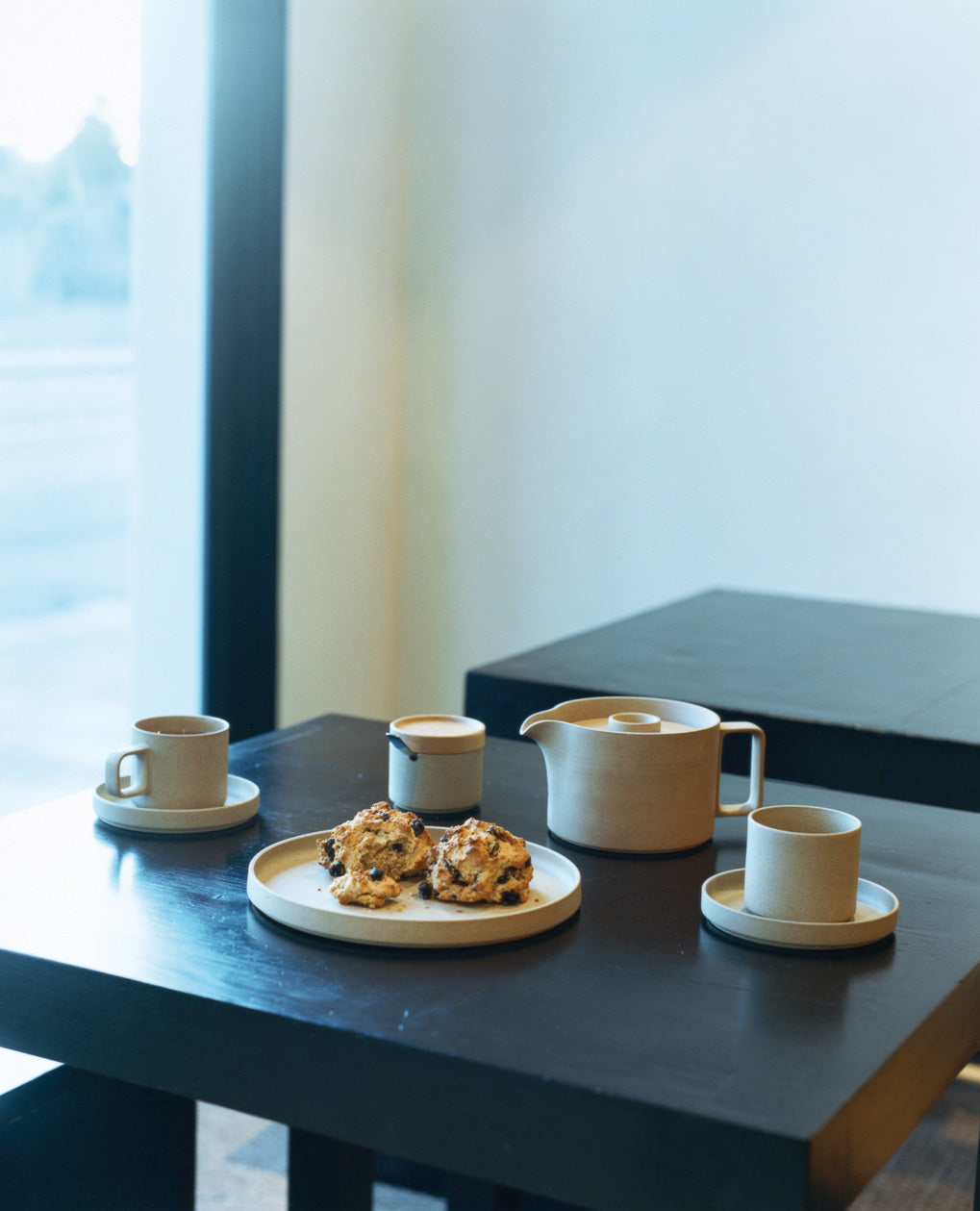
INTRODUCTION
Hasami, Nagasaki is one of the foremost pottery districts in Japan. Porcelain was first made in the area almost 400 years ago, during the Edo Period, and was not only distributed all over Japan but also exported to Europe through the port of Nagasaki. The establishment of a mass production system at an early stage ensured reliability in quality and price, and its rich tradition kept alive. HASAMI PORCELAIN was born under the direction of Takuhiro Shinomoto of Tortoise (Venice, California), whose innovative concept integrates tradition and modernity in tableware.
---
日本有数の窯業の盛んな地、長崎県波佐見町。この地で約400年前の江戸時代につくられはじめた磁器は、当時から日本各地はもとより、長崎港を経てヨーロッパへも出荷された。早くから量産体制が整えられたため、日用の食器としての確かな質と価格を実現したことが知られている。豊かな伝統は、現代まで脈々と受け継がれてきた。 HASAMI PORCELAINは、篠本拓宏(tortoise)のディレクションにより、こうした遺産を現代のコンセプトで革新するテーブルウェアとして生まれた。
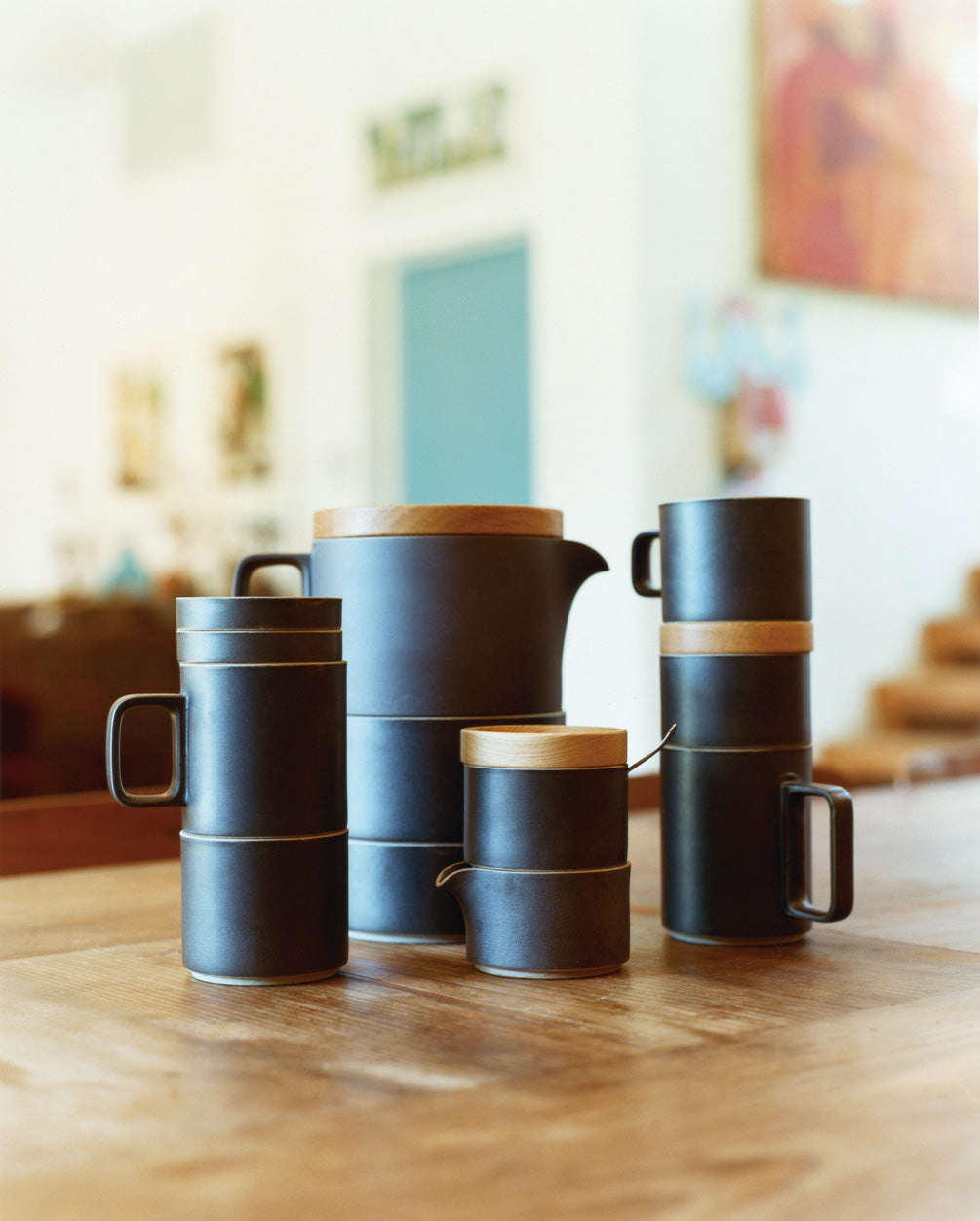
SIMPLICITY
HASAMI PORCELAIN’s curved lines represent the essence of modern Japanese aesthetics that is defined by a combination of modern and traditional styles. Its primary appeal is not only in its form, but also its functional nesting design for case of serving foods and its storage efficiency for limited spaces.
HASAMI PORCELAIN achieves the status of a 20th century masterpiece of contemporary design while seamlessly melding together its traditional roots. It’s simple yet functional design is perfect for either special occasions or for daily use.
---
HASAMI PORCELAINのフォルムには、一切の装飾性がない。日本の伝統的な形態の根本でもある、潔くすっきりとした直線。機能と製造工程の必然性から導かれた、意味のある曲線。シンプルな線のみで構成されているHASAMI PORCELAINのデザインは、いくつもの器が重なり合い、フォルムがリピートすることで、いっそう美しい調和をつくり出す。
20世紀に登場したモダンデザインと共通する考えが、HASAMI PORCELAINの根本にある。このシンプルなフォルムがさまざまなシーンに馴染み、幅広い人々に愛用されるのは、それが理由だろう。生活のための道具にふさわしい、無駄のない佇まいに普遍性が宿っている。
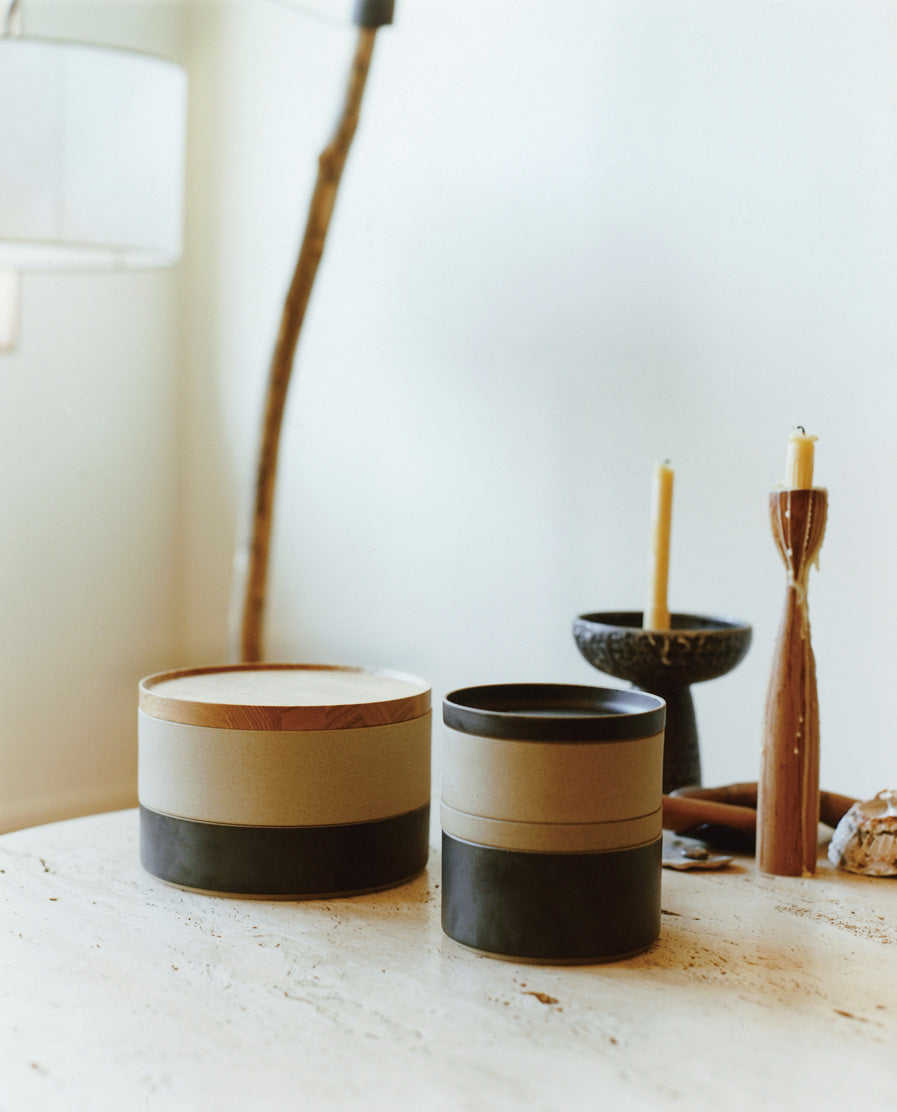
USABILITY
HASAMI PORCELAIN masters both multifunctionality and practicality in its design. Many of the products are versatile in function such as the lids, which can also be used as trays or as plates. The shapes and sizes of all mugs, bowls, lids, and accessories are designed in precision to be made stackable for ease of serving foods and for efficient storage.
The inspiration for this stacking concept came from traditional Japanese lacquered tiered boxes or Jubako. Like the Jubako, HASAMI PORCELAIN can be used for serving foods individually, as a set, as well as for both indoor or outdoor settings.
---
HASAMI PORCELAINの器のサイズは、一定のモジュールに従っている。マグカップ、ボウル、トレイなど個々のアイテムが共通の直径でデザインされているため、自由なスタッキングが可能で、収納時や運搬時も無駄がない。さらに、トレイがボウルのフタになり、単体では大型のプレートとしても使えるように、多機能性も備わっている。
ニーズに合わせてスタッキングできる仕組みや、異なるサイズの器が入れ子で収納できる機能性は、日本料理のための伝統的な漆器である重箱からインスピレーションを得ている。HASAMI PORCELAINは、重箱と同じように、室内でもアウトドアでも、単体でもセットでも、幅広いシーンで自由に使うことができる。

